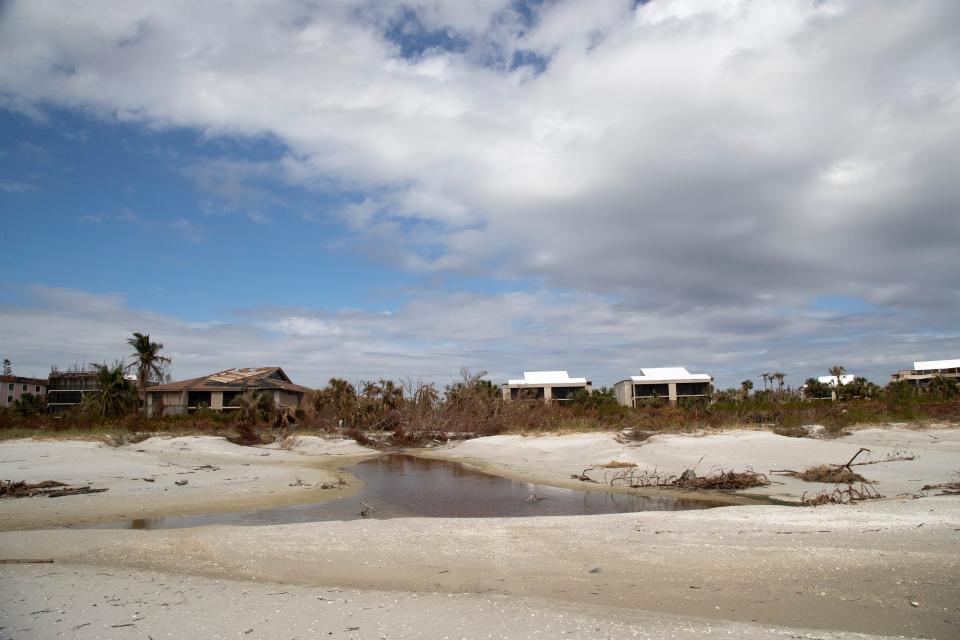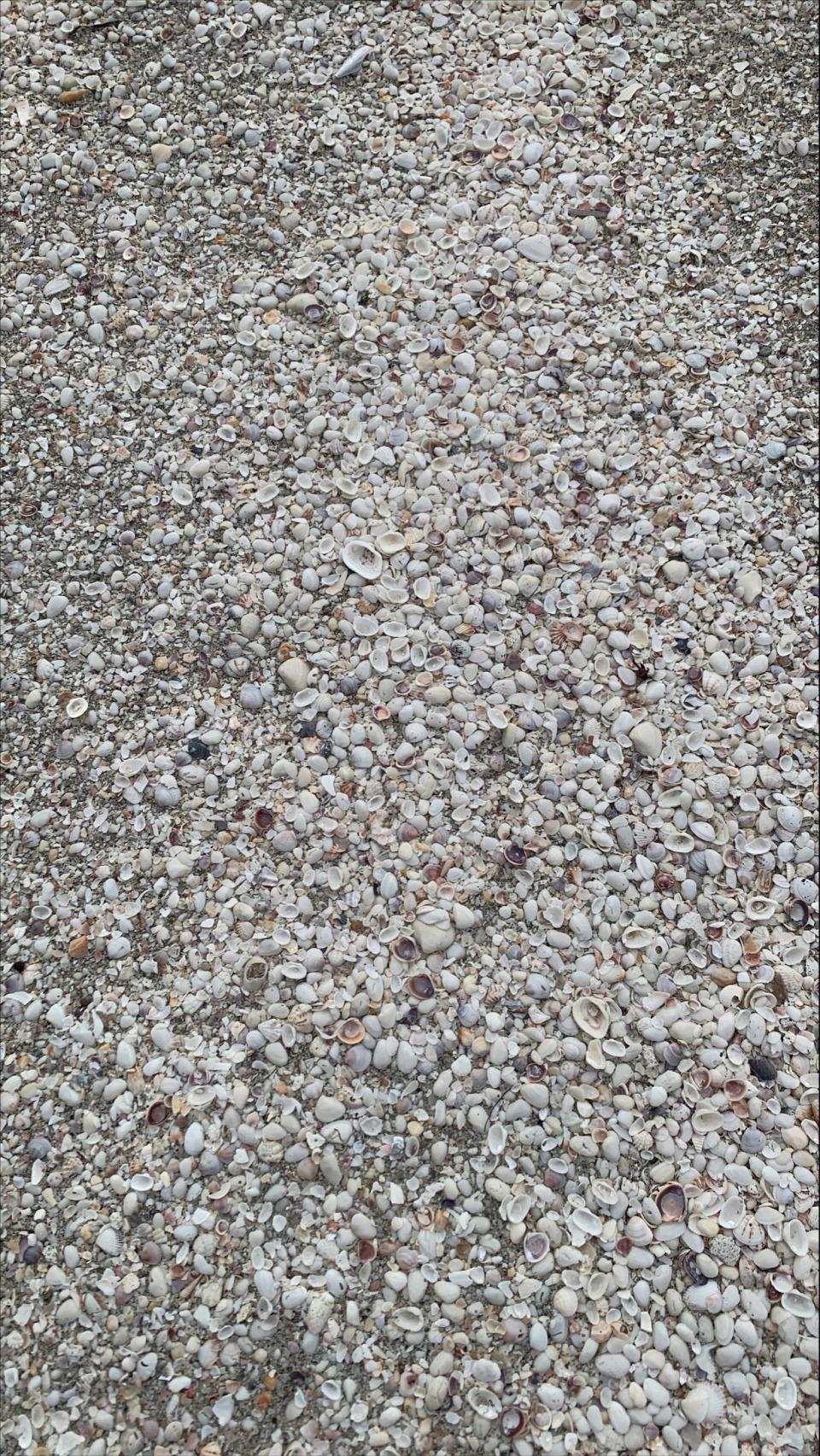How did Hurricane Ian affect 'Seashell Capital of the World'? Experts talk of Ian's impacts
Despite Hurricane Ian's wrath on the famous island, Sanibel may continue to be the place for seashells by the seashore, but the storm's effects could still cause a grim situation for the marine ecosystem.
Following Ian's Sept. 28 hit, some have wondered what the storm's 155 mph winds and 12-foot storm surge would have on its Sanibel and its decorated coastline.
Thousands travel to the "seashell capital of the world" every year, hoping to get a glimpse of the more than 250 types of seashells littering its 15 miles of beaches.
Who said God never gives you more than you can handle?: Love, loss and miracles on Fort Myers Beach
Stay or go?: Four Florida families weigh next steps after losing homes to Ian
By the way: FEMA to provide trailers, manufactured homes for displaced Ian survivors
Surplus of shells after Ian
According to beach expert Stephen Leatherman, residents and shell seekers might not have to fret about Ian ruining Sanibel's reputation for being the top spot for seashell spotting.
He said storms in general usually bring in an excess of shells, adding Sanibel could see possibly more shells due to the storm surge coming in, carrying sand and shells to scatter beyond its beaches and throughout the entire island.
"It may reduce it some … I'm not sure, it's a hard thing to say without having sort a of measure of the height of their shell bed and then the sediment that contains the shells and then if it was scoured off or not," Leatherman, also known as Dr. Beach, said. "So, who's to say exactly, but normally I would think it's going to still be good … I feel like the Sanibel will still have its national reputation as the top shelling beach in the nation."

As for why the barrier island sees more shells on its beaches compared to others around the county, it's a slightly simple answer: it’s one of the very few islands in Florida that run perpendicular, which causes ocean currents to have the beaches primarily flush water downward.
Just offshore where the water isn't clear, Leatherman says Sanibel has an area, similar to a sandbar called a ground level swell, that forms and pushes shells to its beaches mostly intact.
Ian's effects on wildlife

While the seemingly special oversupply of shells on the beaches after Ian might seem like a much-needed positive, it could point signal much darker storm approaching.
José H. Leal, science director and curator at the Bailey-Matthews National Shell Museum on the island, said the presence of excess shells could mean a lot of the wildlife has been harmed.
"If you're looking for shells for your collection, for the little moment there, you will be happy and all but we have to look with a bird's eye view of the situation, that those shells are there because they were affected by the storm," Leal said.
In case you missed it: Cape Coral renters forced to leave house after Hurricane Ian
He details how hurricanes can negatively impact marine life for the long-term, pointing out specific examples of hard-hit marine populations, such as mollusks, microscopic plants and animals, shell makers, oyster reefs and bivalves.
According to research he's gathered, hurricanes generate high waves, rough currents, and shifting sand, all of which may harm sea life. These waves can reach as high as 60 feet, combining to make colder, saltier water and disturbing areas where there isn't too much commotion.
"Resulting currents can extend as far as 300 feet below the surface, causing much harm to marine life in general," Leal elaborates.
This excess rainwater changes the salinity of coastal waters, the deposition of fine sands and mud affecting several marine invertebrates, who Leal says live in specific ranges.
He said the presence of excess sediments in coastal waters will prevent growth of microscopic algae following a hurricane, which are the food of filter-feeding mollusks such as oysters, mussels, and clams.
Other impacts will include wildlife, such as dolphins, sharks and other fish evacuating the area after detecting changes in barometric pressure ahead of an approaching hurricane.
"Studies done by the University of Miami and other Florida research groups show that several species of shallow-water sharks will move away from an approaching storm a day or two before it makes landfall," Leal said. "But slow-moving (or non-moving) animals such as mollusks just can’t do that and will be strongly affected."
Lastly, man-made structures are also impacting the wildlife post-Ian, which he says may leak fuels, oil, battery acids, and other chemicals into coastal waters.
Recovery will happen but will take years
Around this time of year, Leal said they usually brace for the worst with each coming storm and this time their worst fears came true for both the island and themselves
The Bailey-Matthews National Shell Museum itself sustained 5 feet of flooding, significant wind damage to the roof and loss of generators during the storm, which resulted in only 25% of their marine life surviving the rescue.
Fortunately, none of the 550,000 shells in their collection were damaged. The team transported 30% from the third floor storage to the second floor where over 500 shells are normally displayed.
There's no timeline set on the museum's rebuild but employees have been thankful for the support both locally and around the globe. Right now their next steps are holding activities and educational programs that don't require a physical facility, including further educating the public on the Ian's affects on wildlife and its shells.
In terms of the island, Leal said its recovery will happen, though it may take a while for it to happen. He says in the meantime, he hopes the lost populations will recover to their pre-storm levels, adding sometimes different species replace some of the ones found pre-hurricane.
"One thing we may see is that because of the bad effects of the hurricane, you may see shells coming back for quite a while. And in the meantime, things will begin getting back to normal," Leal said. "And one thing to keep in mind is that those species, they've been there for thousands, if not millions of years … and to some extent today, in the long run, they'll be able to come back."
This article originally appeared on Fort Myers News-Press: Experts weighs in on Ian's impact on Sanibel's shelling community

